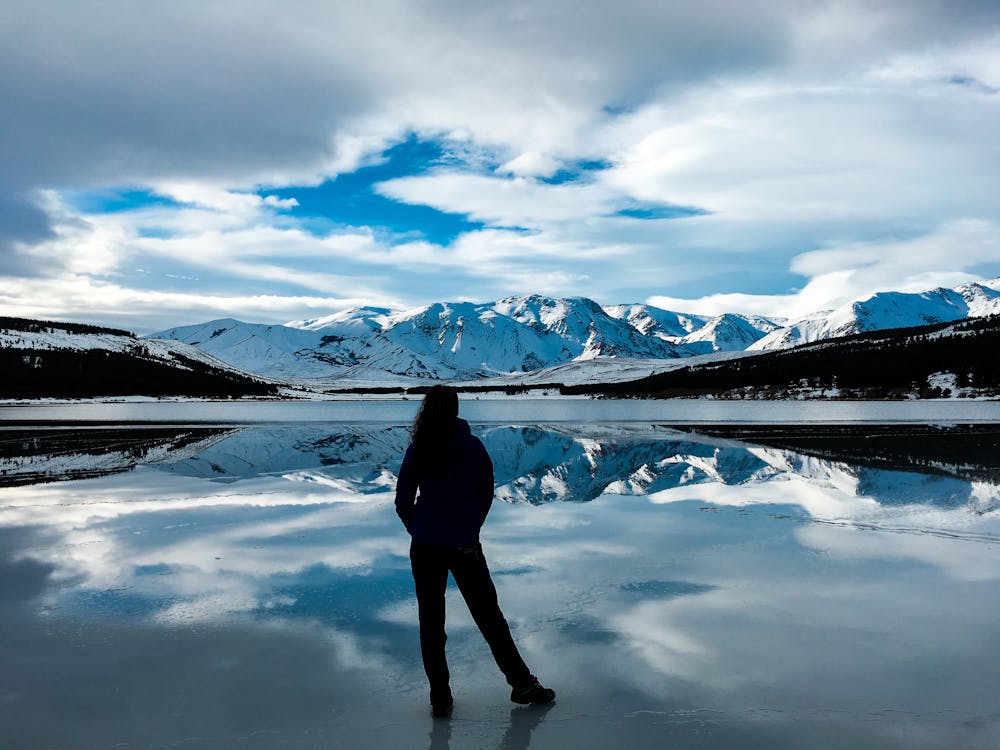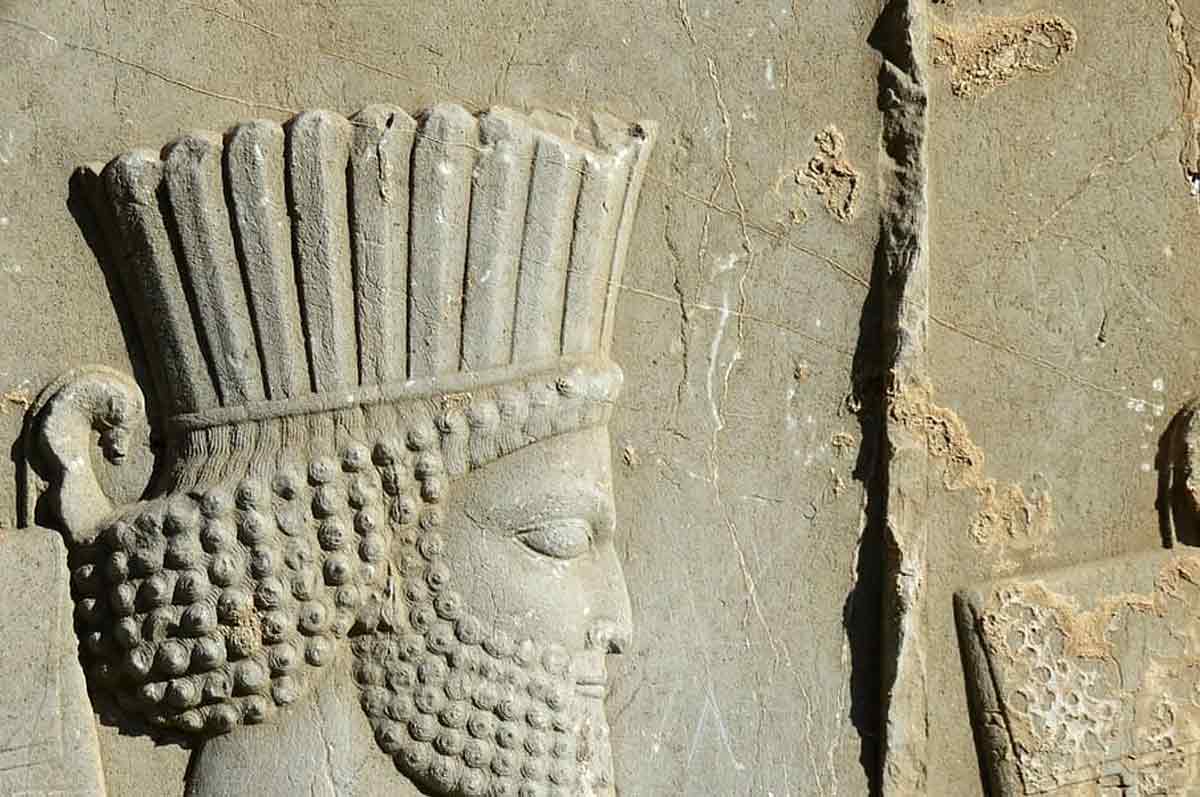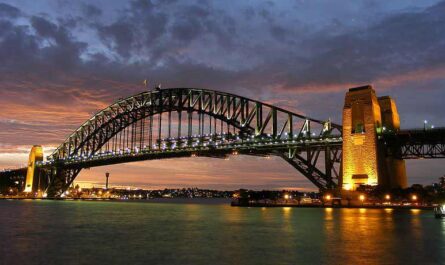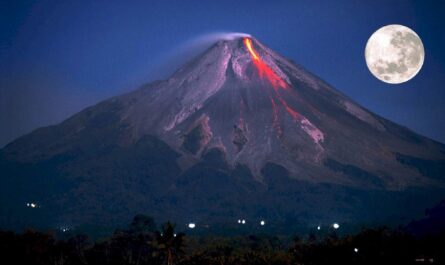What are some of the interesting facts about Australia? Australia’s Aboriginal heritage, spanning over 65,000 years, adds layers of cultural richness to its identity, evident in ancient rock art, dreamtime stories, and traditional ceremonies. Moreover, its multicultural society, shaped by waves of immigration, fosters a dynamic fusion of cuisines, languages, and traditions. From the rugged terrain of the Kimberley to the cosmopolitan streets of Perth, Australia beckons adventurers, nature enthusiasts, and culture seekers alike to explore its boundless wonders and embrace its spirit of adventure. In this article, I will talk about some interesting facts about Australia.
Interesting Facts About Australia: History, Culture, Travel
Australia, the world’s largest island and smallest continent, captivates with its vast expanses of natural beauty and unique wildlife. Nestled in the southern hemisphere, it boasts a diverse landscape that ranges from the iconic red sands of the Outback to the lush rainforests of Queensland and the stunning beaches of the Gold Coast. Its cities, such as Sydney, Melbourne, and Brisbane, pulsate with a vibrant energy, blending modernity with a laid-back charm. Here are some interesting facts about Australia:
1. Continent or Country?
Australia, a land of contrasts and natural wonders, blurs the lines between continent and country, holding dual distinctions as both the world’s sixth-largest country and the largest island on Earth. Its vast expanse stretches across the Southern Hemisphere, encompassing a diverse range of landscapes, from arid deserts to lush rainforests, and teeming coastal waters.
With its unique position straddling the Indian and Pacific Oceans, Australia’s sheer size and geographic diversity make it a continent unto itself, yet its political and administrative boundaries define it as a sovereign nation. This duality is reflected in Australia’s rich cultural tapestry and unique identity, shaped by millennia of Indigenous heritage and centuries of immigration from around the globe. Whether viewed as a continent or a country, Australia’s allure lies in its ability to captivate and inspire, offering endless opportunities for exploration and discovery on both land and sea.
2. Southern Hemisphere Leader
As the largest country entirely within the Southern Hemisphere, Australia reigns supreme over a vast expanse of land and sea, its borders encompassing a diverse array of ecosystems and climates. From the sun-baked deserts of the Outback to the lush rainforests of the tropics, Australia’s geographic diversity is matched only by its cultural richness and natural beauty.
As a leader in the Southern Hemisphere, Australia plays a pivotal role in shaping regional politics, economics, and culture, serving as a beacon of stability and prosperity in a rapidly changing world. With its strategic location and abundant resources, Australia is poised to continue its leadership role in the Southern Hemisphere for generations to come, contributing to the growth and development of the region as a whole.
3. Home to the Great Barrier Reef
Nestled along Australia’s northeastern coast lies a natural wonder of unparalleled beauty and biodiversity: the Great Barrier Reef. Stretching for over 2,300 kilometers, this magnificent coral reef system is the largest of its kind on Earth, teeming with a kaleidoscope of marine life and vibrant coral formations. From the crystal-clear waters of the Whitsunday Islands to the remote reaches of the Coral Sea, the Great Barrier Reef is a paradise for divers, snorkelers, and nature lovers alike, offering a glimpse into the breathtaking diversity of the underwater world.
But the Great Barrier Reef is more than just a tourist destination; it is a UNESCO World Heritage Site and a global treasure, recognized for its ecological significance and cultural importance. As stewards of this precious ecosystem, Australia is committed to protecting and preserving the Great Barrier Reef for future generations, ensuring that its beauty and biodiversity remain a source of wonder and inspiration for years to come.
4. Uluru’s Majesty
In the heart of Australia’s Red Centre, rises Uluru, an ancient sandstone monolith that stands as a symbol of spiritual significance and natural wonder. Known also as Ayers Rock, Uluru holds a sacred place in the culture and traditions of Aboriginal Australians, who revere it as a place of immense cultural and spiritual significance. This UNESCO World Heritage Site, with its towering presence and rich ochre hues, draws visitors from around the globe, inviting them to witness the majesty of the Australian Outback and to connect with the land on a profound level.
As the sun sets over the horizon, casting a warm glow upon Uluru’s weathered surface, the rock seems to come alive with a sense of timeless wisdom, imparting a sense of reverence and awe to all who behold it. For millennia, Uluru has stood as a silent sentinel, bearing witness to the passage of time and serving as a beacon of resilience and strength for the Aboriginal people and all who call Australia home.
5. A Hopping Good Time
In the vast expanses of the Australian Outback, one creature reigns supreme as a symbol of the country’s unique wildlife: the kangaroo. With over 60 different species scattered across the continent, kangaroos are an iconic emblem of Australia, revered for their agility, strength, and distinctive hopping gait. From the towering red kangaroos of the Outback to the diminutive wallabies of the forests, these marsupials embody the spirit of the Australian wilderness, thriving in habitats ranging from arid deserts to lush grasslands.
But it’s not just their athleticism that captivates; it’s their endearing charm and unique adaptations, from their powerful hind legs to their pouches, which cradle their young in a nurturing embrace. For visitors to Australia, encountering kangaroos in the wild is a highlight of any trip, offering a glimpse into the country’s rich natural heritage and fostering a deeper appreciation for the delicate balance of life in the Outback.
6. Unique Currency
In the pockets and wallets of Australians, as well as travelers from around the world resides a symbol of national pride and identity: the Australian dollar (AUD). This official currency of Australia features a unique design on its reverse side, showcasing iconic Australian fauna and landmarks, including the effigy of Queen Elizabeth II. From the playful platypus to the regal kangaroo, each banknote and coin tells a story of Australia’s rich biodiversity and cultural heritage, serving as a reminder of the country’s unique place in the world.
As a medium of exchange, the Australian dollar embodies the spirit of innovation and progress that defines modern Australia, facilitating trade and commerce while also celebrating the nation’s natural beauty and cultural diversity. For Australians, the Australian dollar is more than just a currency; it is a symbol of national identity and pride, a tangible expression of the country’s values and aspirations.
7. Island of Tasmania
Nestled like a precious gem in the southern waters off mainland Australia, Tasmania beckons travelers with its pristine natural beauty and untamed wilderness. This island paradise boasts rugged coastlines, towering mountain peaks, and ancient forests that have remained untouched for millennia. Known for its clean air and crystal-clear waters, Tasmania is a haven for outdoor enthusiasts and nature lovers, offering endless opportunities for exploration and adventure.
From the majestic peaks of Cradle Mountain to the serene beauty of Wineglass Bay, Tasmania’s landscape captivates the imagination and inspires awe in all who venture to its shores. But it’s not just its natural beauty that sets Tasmania apart; it’s the unique ecosystem that thrives within its borders, home to a diverse array of flora and fauna found nowhere else on Earth. For those seeking a retreat into the embrace of nature, Tasmania offers a sanctuary for the soul, a place where time seems to stand still amidst the timeless beauty of the land.
8. Home to the Emu
In the vast expanses of the Australian Outback, roams a creature as iconic as it is enigmatic: the emu. As the world’s second-largest bird, surpassed only by the ostrich, the emu is a distinctive feature of the Australian landscape, its long legs and powerful stride propelling it across the arid plains with effortless grace. Flightless yet formidable, the emu embodies the resilience and adaptability of Australia’s native wildlife, thriving in habitats ranging from dense forests to open grasslands.
With its distinctive plumage and curious demeanor, the emu has captured the imagination of Australians for generations, inspiring legends and folklore that speak to its place in the country’s cultural heritage. From the dusty trails of the Outback to the lush coastal regions of the East, encounters with emus are a cherished part of the Australian experience, a reminder of the wild and untamed spirit that defines the land down under.
9. Sydney Opera House
Perched on the sparkling shores of Sydney Harbour, the Sydney Opera House stands as a timeless symbol of architectural innovation and cultural excellence. With its iconic shell-like design and soaring white sails, this UNESCO World Heritage Site is a masterpiece of modern architecture, captivating the imagination and inspiring awe in all who behold it. Designed by Danish architect Jørn Utzon and opened in 1973, the Sydney Opera House is not just a performing arts venue; it is a cultural icon that has become synonymous with the city of Sydney and the spirit of Australia.
From its majestic exterior to its world-class performance spaces, the Opera House offers a glimpse into the beauty and creativity that define the human experience. Whether attending a ballet performance in the Joan Sutherland Theatre or enjoying a concert in the Concert Hall, visitors to the Sydney Opera House are treated to a feast for the senses, a celebration of artistry and excellence that transcends language and culture.
10. A World War I Memorial
Stretching along the picturesque coastline of Victoria like a ribbon of remembrance, the Great Ocean Road stands as a poignant tribute to the sacrifices of Australian soldiers in World War I. As the world’s longest war memorial, this scenic route winds its way through rugged cliffs, pristine beaches, and lush rainforests, offering travelers a journey of reflection and reverence.
Built by returning servicemen between 1919 and 1932, the Great Ocean Road is more than just a scenic drive; it is a living memorial to the courage and resilience of those who served, a testament to their enduring legacy in the fabric of Australian society. From the solemn beauty of the Memorial Arch to the tranquil shores of Loch Ard Gorge, each stop along the Great Ocean Road offers a moment of contemplation and gratitude, a chance to honor the memory of those who made the ultimate sacrifice for their country.
11. Aussie Rules Football
In the heart of Australian sporting culture beats the pulse of Australian rules football, a dynamic and exhilarating sport that captures the imagination of millions of fans across the country. Played with a unique blend of athleticism, skill, and strategy, Aussie rules football is a fast-paced spectacle that thrills spectators with its high-flying marks, bone-crunching tackles, and lightning-fast play.
From the roar of the crowd at the Melbourne Cricket Ground to the raucous atmosphere of suburban ovals, Aussie rules football unites communities and transcends social barriers, forging bonds of camaraderie and loyalty that endure through triumph and adversity alike. With its origins dating back to the 19th century, Aussie rules football has become an integral part of Australian identity, celebrated for its passion, intensity, and spirit of fair play. For fans of the game, there is no greater thrill than watching their favorite teams battle it out on the field, their hearts racing with every kick, mark, and goal.
12. Cricket Crazy
In the pantheon of Australian sports, cricket holds a special place of reverence, its storied history and timeless traditions woven into the fabric of Australian culture. From the hallowed grounds of the Sydney Cricket Ground to the sun-drenched pitches of the Melbourne Cricket Ground, cricket captivates the nation with its blend of skill, strategy, and suspense. Whether competing in the iconic Ashes series against England or facing off against rivals on the international stage, the Australian cricket team commands respect and admiration for its tenacity and talent.
With legends like Don Bradman, Shane Warne, and Steve Smith etching their names into cricketing lore, Australia boasts a proud cricketing heritage and a strong international reputation. But it’s not just the players who make cricket special; it’s the fans, whose unwavering support and passion for the game transform every match into a spectacle of national pride and sporting excellence. From the crack of the bat to the roar of the crowd, cricket is more than just a sport in Australia; it’s a way of life, a timeless tradition that unites generations and defines the spirit of the nation.
13. Indigenous Heritage
For over 65,000 years, the ancient lands of Australia have been home to the Aboriginal and Torres Strait Islander peoples, whose rich and enduring cultures have shaped the fabric of the nation. With a deep connection to the land and a profound respect for its natural rhythms, Indigenous Australians have forged a unique way of life that celebrates harmony, community, and spirituality.
From the sunburnt deserts of the Outback to the lush rainforests of the tropics, Indigenous heritage permeates every corner of the continent, leaving an indelible mark on the landscape and the collective consciousness of the nation. Today, as custodians of the world’s oldest living cultures, Aboriginal and Torres Strait Islander peoples continue to uphold their traditions, languages, and customs, ensuring that their legacy endures for generations to come.
14. Dreamtime Stories
At the heart of Aboriginal spirituality lies the Dreamtime, a timeless realm where the past, present, and future merge into a single, eternal moment. Passed down through generations in a rich oral tradition, Dreamtime stories form the foundation of Indigenous culture, providing a spiritual framework for understanding the world and one’s place within it. These ancient narratives, steeped in symbolism and allegory, recount the creation of the universe, the journeys of ancestral beings, and the natural phenomena that shape the land.
From the Rainbow Serpent weaving its way through the earth to the spirits of the ancestors watching over the land, Dreamtime stories offer a window into the profound connection between Aboriginal people and the land they call home. Through song, dance, and ceremony, Indigenous Australians continue to honor and celebrate the Dreamtime, keeping alive the sacred traditions that bind them to the past and guide them into the future.

15. Didgeridoo Delights
In the haunting strains of the didgeridoo, echoes the soulful melody of ancient Australia, a sound that resonates with the spirit of the land and the people who have called it home for millennia. Crafted from a hollowed-out log and decorated with intricate designs, the didgeridoo is a symbol of Aboriginal music and culture, revered for its deep, resonant tones and hypnotic rhythms. Traditionally played by men during ceremonial gatherings and storytelling sessions, the didgeridoo evokes the timeless beauty of the Australian wilderness, transporting listeners to a realm where time stands still and the spirit roams free.
Today, the haunting melodies of the didgeridoo can be heard around the world, captivating audiences with their primal energy and evocative power. Whether played as a solo instrument or accompanied by other traditional instruments, the didgeridoo delights the senses and stirs the soul, offering a glimpse into the ancient wisdom and enduring spirit of Aboriginal Australia.
16. Outback Adventures
Venture into the heart of Australia’s rugged wilderness, where the vast expanse of the Outback stretches as far as the eye can see, offering adventurers a journey into the untamed beauty of the desert landscape. Encompassing a large portion of central Australia, the Outback is a land of extremes, where towering red dunes meet endless blue skies and ancient rock formations rise like sentinels against the horizon.
Here, amidst the harsh and unforgiving terrain, intrepid travelers can embark on a journey of discovery, exploring hidden gorges, cascading waterfalls, and sacred Aboriginal sites that whisper tales of a bygone era. Whether traversing the legendary tracks of the Birdsville Track or marveling at the natural wonders of Uluru and Kata Tjuta, the Outback promises adventure at every turn, inviting explorers to lose themselves in the timeless beauty of the Australian wilderness.
17. The World’s Oldest Rock
Beneath the sun-baked plains of Western Australia lies a geological marvel that holds the key to Earth’s ancient past: fossilized stromatolites, believed to be the world’s oldest evidence of life, dating back billions of years. These remarkable formations, found in the remote reaches of Shark Bay and other locations, offer a glimpse into the primordial origins of life on our planet, preserving a record of microbial communities that thrived in ancient seas.
As silent witnesses to the passage of time, stromatolites hold a fascination for scientists and explorers alike, offering clues to the mysteries of evolution and the resilience of life in even the most inhospitable environments. Today, visitors to Western Australia can marvel at these ancient relics, walking in the footsteps of the earliest forms of life and gaining a newfound appreciation for the interconnectedness of all living things.
18. Camel Capital of the World
In the arid plains of the Australian Outback roams a curious sight: herds of feral camels, descendants of animals brought over to Australia in the 19th century. Surprisingly, Australia is home to the world’s largest population of feral camels, with estimates ranging into the millions. Originally introduced for transportation and exploration purposes, camels quickly adapted to the harsh desert environment, thriving in the vast expanses of the Outback.
Today, these resilient creatures roam freely across the remote regions of central Australia, their presence a testament to the ingenuity and adaptability of nature. For travelers seeking a unique Outback adventure, camel trekking offers a chance to experience the timeless beauty of the desert landscape from a new perspective, traversing ancient trails and forging a connection with the land and its inhabitants that transcends time and distance.
19. The Quokkas of Rottnest Island
Off the coast of Perth lies a slice of paradise known as Rottnest Island, home to some of Australia’s most adorable residents: the quokkas. These small marsupials, with their endearing smiles and friendly demeanor, have captured the hearts of visitors from around the world, earning Rottnest Island the nickname “the Island of the Quokkas.” Found nowhere else on Earth, quokkas are a beloved tourist attraction, delighting visitors with their playful antics and photogenic poses.
Whether lounging in the sun, nibbling on grass, or greeting passersby with a curious glance, these charismatic creatures embody the carefree spirit of island life, inviting travelers to immerse themselves in the natural beauty and laid-back atmosphere of Rottnest Island. For a truly unforgettable experience, visitors can snap a selfie with a quokka, capturing a moment of pure joy and wonder that will be cherished for a lifetime.
20. Wine Regions Galore
Raise a glass to Australia’s vibrant wine culture, where over 60 distinct wine regions produce a dazzling array of award-winning wines that rival those of the Old World. From the sun-drenched vineyards of the Barossa Valley to the cool-climate terroirs of Tasmania, Australia’s wine regions offer a tapestry of flavors and styles that reflect the diversity of the country’s landscape and climate. Whether savoring a rich Shiraz from the Hunter Valley or a crisp Chardonnay from Margaret River, wine lovers are spoiled for choice when it comes to exploring Australia’s wine regions.
With a long history of winemaking dating back to the early days of European settlement, Australia has emerged as a global powerhouse in the world of wine, renowned for its innovation, quality, and commitment to sustainability. Whether embarking on a wine tour through the picturesque countryside or enjoying a glass of local wine at a cozy cellar door, Australia’s wine regions offer a sensory journey that delights the palate and nourishes the soul.
21. Vegemite Power
Love it or loathe it, Vegemite holds a special place in the hearts (and stomachs) of Australians as a quintessential breakfast spread that packs a powerful punch of flavor. Made from brewer’s yeast extract, Vegemite is a thick, dark paste with a savory, umami-rich taste that is uniquely Australian. Whether spread thinly on toast or slathered generously on a sandwich, Vegemite is a beloved (or perhaps slightly feared) part of the Aussie breakfast table, enjoyed by generations of Australians since its introduction in the 1920s.
While its strong, salty flavor may be an acquired taste for some, Vegemite is revered for its nutritional value, boasting high levels of B vitamins and other essential nutrients. Whether you’re a Vegemite aficionado or a curious newcomer, no trip to Australia is complete without sampling this iconic spread and experiencing the unique culinary traditions that make Australian cuisine so distinctive.
22. The Great Sandy Desert
In the vast expanse of Western Australia, lies the Great Sandy Desert, a sprawling landscape of dunes and scrubland that stretches as far as the eye can see. As the largest desert in Australia, the Great Sandy Desert is a testament to the raw power and beauty of nature, its shifting sands and shimmering heat creating an otherworldly atmosphere that captivates the imagination.
Here, amidst the harsh and unforgiving terrain, life persists in unexpected ways, with hardy plants and animals adapted to survive in this arid environment. From the towering red dunes of the Simpson Desert to the ancient salt lakes of Lake Disappointment, the Great Sandy Desert is a land of contrasts and contradictions, where the timeless rhythms of the natural world unfold in all their glory.
23. The Kimberley Region
Nestled in the rugged wilderness of Western Australia, the Kimberley region is a land of untamed beauty and ancient wonder, where towering gorges, cascading waterfalls, and ancient rock paintings tell the story of a land steeped in history and culture. Renowned for its breathtaking landscapes and rich Aboriginal heritage, the Kimberley is a paradise for adventurers and explorers, offering a glimpse into the timeless beauty of the Australian Outback.
From the majestic heights of the Bungle Bungle Range to the tranquil waters of the Ord River, the Kimberley captivates the senses with its rugged beauty and unspoiled wilderness. For travelers seeking a truly immersive experience, the Kimberley offers a chance to connect with the land and its people in a profound and meaningful way, forging memories that will last a lifetime.
24. Fraser Island: The World’s Largest Sand Island:
Off the coast of Queensland lies a natural wonder unlike any other: Fraser Island, the world’s largest sand island and a paradise for nature lovers and outdoor enthusiasts. Stretching over 120 kilometers along the coast, Fraser Island is a mosaic of pristine beaches, lush rainforests, and crystal-clear lakes, creating a diverse and dynamic ecosystem that supports a wealth of plant and animal life. From the towering dunes of Seventy-Five Mile Beach to the tranquil waters of Lake McKenzie, Fraser Island offers endless opportunities for exploration and adventure.
Whether trekking through the ancient forests, swimming in the crystal-clear waters, or spotting wildlife in their natural habitat, visitors to Fraser Island are treated to a sensory feast that celebrates the beauty and diversity of the natural world. As a UNESCO World Heritage Site, Fraser Island is not just a tourist destination; it is a living testament to the power and resilience of nature, a wildlife sanctuary, and a source of inspiration for all who venture to its shores.
25. The Daintree Rainforest
Nestled along the coast of Queensland lies a living relic of Earth’s ancient past: the Daintree Rainforest, a UNESCO World Heritage Site and one of the oldest rainforests on the planet. With roots stretching back over 180 million years, the Daintree is a living testament to the resilience and adaptability of nature, its lush canopy sheltering a wealth of plant and animal life found nowhere else on Earth. From towering ferns to ancient cycads, the Daintree is a treasure trove of biodiversity, home to countless species of flora and fauna, including rare and endangered species such as the cassowary and the tree kangaroo.
For visitors, the Daintree offers a journey into the heart of the natural world, where every step reveals a new wonder and every sound carries the echo of millennia past. Whether exploring the canopy on a jungle walk, cruising along the Daintree River in search of wildlife, or simply soaking in the sights and sounds of the forest, a visit to the Daintree is an unforgettable experience that leaves a lasting impression on all who venture into its embrace.
26. Surfing Paradise
Along Australia’s vast coastline, a wave of excitement awaits surfers of all skill levels, drawn to the country’s legendary breaks and world-class surf conditions. From the golden sands of Bondi Beach to the rugged shores of Margaret River, Australia offers an endless playground for wave riders seeking the ultimate surfing experience. With its diverse range of breaks and pristine beach breaks, Australia’s long coastline caters to surfers of all tastes and preferences, from beginners catching their first wave to seasoned pros carving up the face of a monster swell.
Whether chasing the perfect barrel or simply soaking in the sun and surf, surfing in Australia is more than just a sport; it’s a way of life, a culture that celebrates freedom, adventure, and the raw power of the ocean. For surfers from around the globe, Australia’s iconic breaks offer a chance to connect with nature and push the limits of their abilities, creating memories that last a lifetime.
27. The Great Barrier Reef Marine Park
Beneath the sparkling waters of the Coral Sea lies a wonderland of color and life: the Great Barrier Reef Marine Park, a UNESCO World Heritage Site, and the world’s largest marine park. Stretching for over 2,300 kilometers along the coast of Queensland, the Great Barrier Reef is a sanctuary for thousands of species of marine life, from vibrant corals and tropical fish to majestic sea turtles and graceful manta rays. As one of the most biodiverse ecosystems on the planet, the Great Barrier Reef is a treasure trove of natural wonders, offering snorkelers and divers a chance to explore its vibrant coral gardens and underwater landscapes.
But the Great Barrier Reef is more than just a tourist destination; it is a fragile ecosystem under threat from climate change, pollution, and overfishing. As custodians of this precious resource, the Great Barrier Reef Marine Park Authority works tirelessly to protect and preserve the reef for future generations, ensuring that its beauty and biodiversity remain a source of wonder and inspiration for all who visit.
28. Unique Wildlife
Australia’s rich and diverse landscapes are home to some of the world’s most unique and iconic wildlife, making it a biodiversity hotspot unlike any other. With a large number of endemic species found nowhere else on Earth, Australia boasts a menagerie of creatures that capture the imagination and inspire wonder. From the cuddly koala munching on eucalyptus leaves to the burrowing wombat navigating its underground tunnels, and from the elusive platypus with its duck-like bill to the kangaroo bounding across the Outback, Australia’s wildlife is as diverse as it is fascinating.
But it’s not just the cute and cuddly critters that make Australia’s wildlife special; it’s also the weird and wonderful, like the spiky echidna and the nocturnal sugar glider. For nature lovers and wildlife enthusiasts, Australia offers a treasure trove of experiences, from spotting kangaroos in the wild to snorkeling alongside colorful fish on the Great Barrier Reef, providing a deeper appreciation for the delicate balance of life in this remarkable land.
29. Island of Tasmania’s Devils
Tasmania, affectionately known as the “Apple Isle,” is not only famous for its stunning landscapes and pristine wilderness but also for its iconic Tasmanian devil. This large, carnivorous marsupial, with its fearsome reputation and distinctive black fur, is a symbol of Tasmania’s unique natural heritage. However, the Tasmanian devil faces significant conservation challenges, including habitat loss, disease, and competition with introduced species. RPM 3.0 – 60% CONVERSION & Money for Affiliate Marketing
Efforts to protect and preserve the Tasmanian devil have been underway for decades, with initiatives such as captive breeding programs and disease management strategies helping to safeguard this iconic species for future generations. Despite these challenges, the Tasmanian devil remains an integral part of Tasmania’s identity, inspiring conservation efforts and fostering a sense of pride and stewardship among Tasmanians and wildlife enthusiasts worldwide.
30. A Melting Pot of Cultures
Australia’s vibrant and multicultural society is a reflection of its rich tapestry of ethnicities and traditions, shaped by waves of immigration throughout its history. From the indigenous peoples who have inhabited the land for thousands of years to the diverse array of cultures and communities that have made Australia their home, the country is a melting pot of identities and experiences. With influences from Europe, Asia, Africa, and beyond, Australia’s cultural landscape is as diverse as it is dynamic, encompassing a kaleidoscope of languages, religions, cuisines, and traditions.
From the bustling streets of Sydney’s Chinatown to the vibrant festivals celebrating Indigenous culture, Australia offers a wealth of opportunities for cross-cultural exchange and mutual understanding. As a multicultural nation, Australia celebrates diversity as a source of strength and resilience, fostering a spirit of inclusivity and acceptance that enriches the fabric of society and shapes the national identity.



